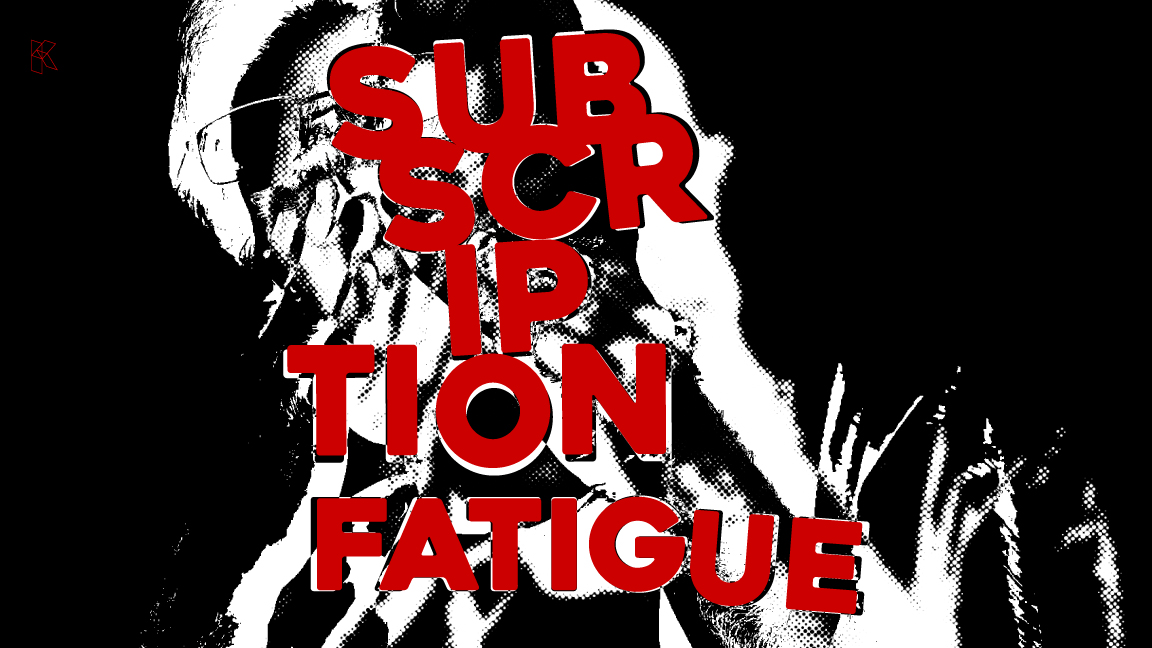Does customers having this fatigue now? Over the years, there has been a shift in how digital products are licensed, with many companies now offering subscription-based models. Responding to all the fuss with all the anti-subscription frenzy coming from our customers. We understand why certain plugin companies are moving towards subscription models but is it worth it? Our latest article breaks down the pros and cons of non-subscription vs subscription licensing models, so you can make an informed decision on which option is best for you.
Virtual Studio Technology (VST) plug-ins have become an essential part of digital music production. However, the licensing models for these plug-ins have shifted over time, with many companies moving towards subscription-based models. This article explores the differences between non-subscription and subscription licensing models for VST plug-ins on how they impact customers. While subscription models can provide access to the latest features and support, they can also be costly and lead to subscription fatigue. The article also discusses why perpetual licenses make more sense for software, as software is often used as a tool rather than a consumable product.
The music industry has seen a significant shift towards software-based production tools in the past decade. One type of software plug-ins that have gained popularity is the virtual studio technology (VST) plug-ins, Apple’s Audio Unit, ProTools’ AAX, and Reason Studio’s Rack Extension. These are third-party software add-ons that musicians and producers use to enhance the capabilities of their digital audio workstations (DAWs). Over the years, there has been a shift in how VST plug-ins are licensed, with many companies now offering subscription-based models. In this article, we will explore the differences between non-subscription and subscription licensing models for VST plug-ins, how they affect customers, and why subscription fatigue is becoming a concern.
What is a Subscription Model in Software Plug-Ins Industry?
In a subscription model, customers pay a monthly or yearly fee to access a software product or service. The fee is usually lower than the outright purchase price, but customers have to keep paying as long as they want to keep using the software. In the context of VST plug-ins, a subscription model would mean that customers pay a recurring fee to access a particular plug-in or a bundle of plug-ins. The access usually comes with automatic updates, customer support, and other perks.
Why are Many Companies Moving to Subscription Business Model?
One reason for the shift towards subscription models is that it provides a more predictable revenue stream for companies. With a traditional licensing model, companies would sell a plug-in once and then rely on occasional updates or new versions to generate additional revenue. With a subscription model, companies can count on a steady stream of income, which helps with financial planning and investing in research and development.
Additionally, subscription models can offer better customer support, as the company can dedicate more resources to addressing customer issues and releasing frequent updates. This can lead to increased customer loyalty and satisfaction.
How Does it Compare Between Non-Subscription vs Subscription Software Model?
In a non-subscription licensing model, customers purchase a license for the software outright, usually for a one-time fee. The license allows the customer to use the software indefinitely, including bugfixes and updates for the current version in addition to customer support. The customer owns the license to use the software and can use it on multiple computers, some companies also allows selling or transferring the license to another user.
In comparison, a subscription model provides access to the software for as long as the customer pays the recurring fee. The customer does not own the software and cannot use it without an active subscription. However, they receive frequent updates and customer support, which can be beneficial for those who need the latest features and functionality.
Essentially, it’s the traditional method of purchasing software where you pay for the license upfront and have the right to use the software indefinitely.
Some advantages of perpetual licenses for customers include:
- Ownership of the software for the term of the perpetual license agreement
- Paying only a one-time fee to own the software
- Long-term use of the software
- Able to transfer ownership to others
- In some cases, support is provided perpetually
How Does it Affect Customers?
The shift towards subscription models has both positive and negative implications for customers. On the one hand, customers can access the latest software features for cheap and receive support more easily, which can help them produce better music. On the other hand, customers have to keep paying to access the software, which can be costly in the long run. Additionally, customers may feel like they don’t own the software, and there is no guarantee that they can continue to use it if they stop paying.
Subscription Fatigue
Subscription fatigue refers to the feeling of exhaustion and frustration that customers experience when they have too many recurring subscriptions. In recent years, many software companies have moved towards subscription models, which can add up quickly for customers. Customers may find it challenging to manage multiple subscriptions and may feel like they are paying for more than they need.
Why Many People Dislike Subscribing Software?
Many people dislike subscribing software because producing music is a long-term commitment. When you invest time and money into a particular software plug-in, you want to know that you can use it for years to come. Additionally, subscription fatigue can lead to frustration and the feeling that customers are not getting value for their money. Finally, subscribing to software means that you don’t own it. If the company decides to discontinue the software, customers may lose access to it entirely, even if they have been paying for it for years.
Opinion: Why Non-subscription/Perpetual Licenses Make More Sense for Software?
One of the main reasons why perpetual licenses make more sense for software is because software is often used as a tool rather than a consumable product. When you purchase a VST plug-in, you are not necessarily “consuming” it in the same way you would consume a movie on Netflix or a song on iTunes. Instead, you are using the software to create something new, whether it be a song, a sound effect, or a podcast.
As a result, perpetual licenses make more sense for software because they allow users to continue using the software as long as they need it, without worrying about recurring costs or subscription fatigue. With a perpetual license, users can make a long-term investment in the software and rely on it for years to come.
In addition, perpetual licenses provide users with greater control over their software. With a perpetual license, users own the software and can use it on any compatible device they choose. This is in contrast to subscription models, where users do not own the software and may lose access to it if they stop paying the recurring fee.
Overall, while subscription models can provide access to the latest features and support, perpetual licenses make more sense for software because they offer greater long-term value and control to users.
How About Kuassa License?
Kuassa is a company that offers a variety of VST/AU/VST3/AAX plug-ins for music production. Kuassa offers perpetual licenses that allow customers to use their plug-ins indefinitely. We also offers subscription and Rent-to-Own plans, unfortunately subscription and Rent-to-Own only exclusive for Reason Studio’s Rack Extension platform.
As for non-subscription licensing, Kuassa offers perpetual licenses that allow customers to use their plug-ins indefinitely, with free updates for a limited time. Customers can also sell or transfer their licenses to another user if they no longer need them.
Regarding Kuassa’s Update Policy
Upgrades mean, for example, the Kuassa Amplifikation One will be replaced by a new version. e.g. Kuassa Amplifikation TWO.
An upgrade price only applies if you want to upgrade from Kuassa Amplifikation ONE to Kuassa Amplifikation TWO which will have significant improvements in term of features and overall value. The upgrade price will be lower than a new purchase.
About updates, at this time our products are reaching version 1.x.x which are free for the owners of version 1.x.
Conclusion
In conclusion, the shift towards subscription-based licensing models for VST plug-ins has both positive and negative implications for customers. While subscription models can provide access to the latest features and support, they can also be costly and lead to subscription fatigue. Ultimately, customers must weigh the benefits and drawbacks of each licensing model and choose the option that best suits their needs. Additionally, companies like Kuassa offer flexible licensing options, allowing customers to choose between subscription and non-subscription models.


